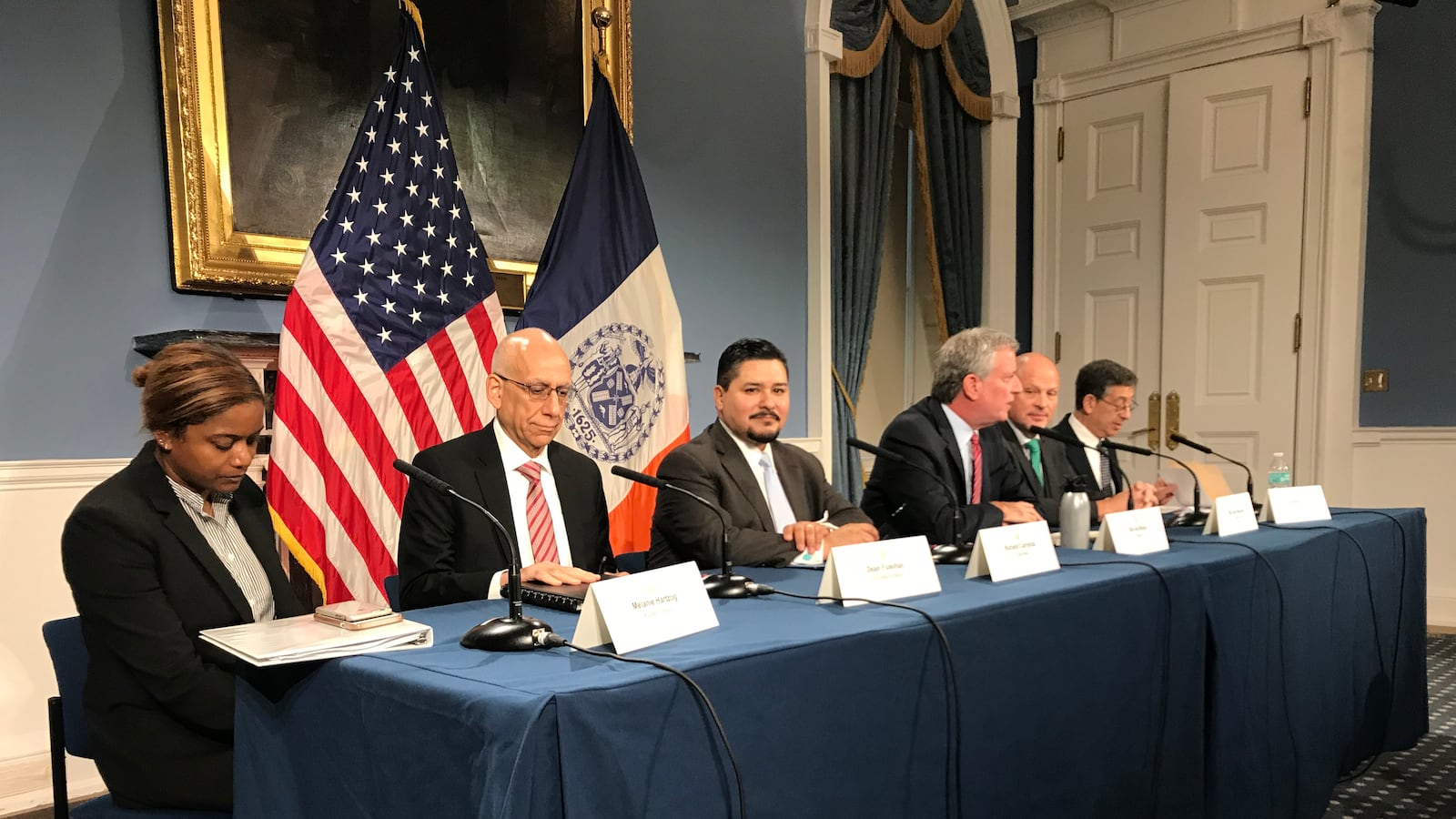New York City’s educators have a new contract that provides extra pay to teachers who work in hard-to-staff schools, tweaks teacher evaluations, and calls for the creation of a new screening tool to be used in hiring, city and union officials announced Thursday afternoon at City Hall.
The contract was hammered out months ahead of schedule and includes a number of unexpected details. It creates a new “Bronx Plan” that targets the city’s neediest schools, providing up to $8,000 to teachers who fill hard-to-staff positions and calls for educators to play a role in developing school improvement plans.
“It really is about a different way of approaching school improvement,” said schools Chancellor Richard Carranza.
An estimated 180 schools will be included in the plan, which calls on the city to identify 120 new “Collaborative Schools” where teachers and community members will have a “substantial voice” in driving school decisions. Those Collaborative Schools will receive $25,000 in additional funding.
[Related: Most New York City teachers would be observed less often under new contract deal]
Teacher evaluations were also revamped. Starting next school year, the evaluations will be tied to teachers’ experience and effectiveness. Those rated “developing” or “ineffective” will be observed more frequently than those who have already earned an effective or highly effective rating. And tenured teachers will be subject to less oversight than those still on probation.
Also new: a yet-to-be-developed screen to be used in hiring decisions. Officials likened it to the kinds of psychological profiles, workshops, and stress tests that police departments use to filter recruits.
[Related: New York City teachers will be screened for ‘suitability’ under new union contract]
Salaries will get a boost, beginning with a 2 percent raise in February, another 2.5 percent increase in May 2020, and a 3 percent increase in the agreement’s final year.
This contract is high stakes since it’s the first to be negotiated in the wake of Janus, a Supreme Court decision that could dramatically drain union membership. So far, UFT leaders say members are sticking with them, and the new contract could show teachers the advantages of staying in the union.
Even before the new deal was reached, the UFT this summer secured a huge victory for its members: six weeks of paid parental leave for birth, foster, adoptive, and surrogate parents. To cover the cost of the new benefit, the union’s contract was extended into February — an additional two-and-a-half months.
But City Hall and the country’s largest local union were able to come to an agreement well before the deadline. The speedy negotiations are a marked break from the past, when the union clashed with previous Mayor Michael Bloomberg as the financial crisis squeezed city budgets. The de Blasio administration, in contrast, is rarely at odds with the UFT, and a torrent of property taxes is once again flowing into city coffers.
At Thursday’s press conference, Carranza called the UFT president his “brother from another mother.”
“Yes, I feel like I have another brother in my life,” president Michael Mulgrew said. “The UFT truly has a partner at this time.”
It was the first contract to be negotiated under Carranza, who has made teacher training a priority for the education department.
“If we expect our students to achieve excellence, then we must support our teachers and leaders, and all our staff members to that end,” he said in a recent speech to the Association for a Better New York.
The agreement, which still needs to be ratified by UFT members, is scheduled to take effect in February and run through 2022. It would cover the union’s 129,000 members, who include about 79,000 classroom teachers. The city says it will cost $2.1 billion, but expects much of that cost to be offset by health care savings for a net cost of $572 million.
Clarifications: This story has been updated to clarify how many schools will be eligible for additional money as part of the Collaborative Schools plan. It has also been updated to reflect the union’s membership beyond classroom teachers.

